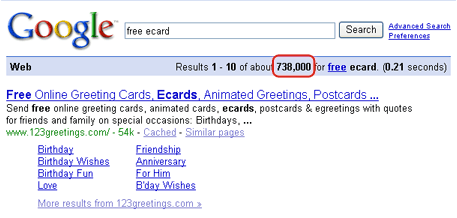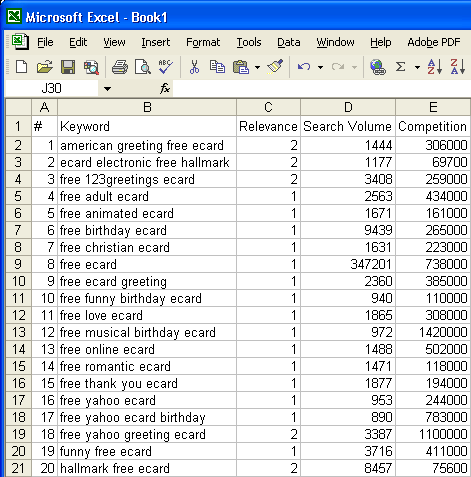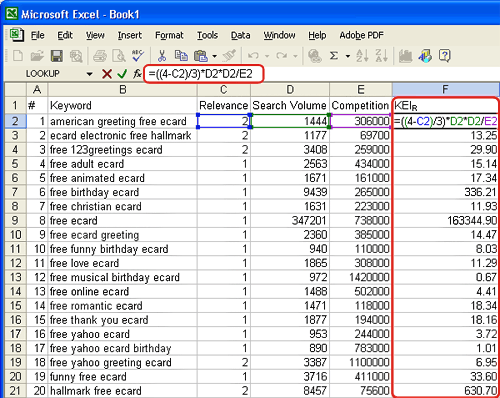Shortlist your keywords
Sorry, you are not logged in. Please login to get full access to this page or register if you're not registered yet.
Now you have a long and versatile list of keywords and keyphrases to choose from. For my little son this would be enough, but we're after something much bigger than pocket money. Thanks, Andy, now your dad has to make a final decision. Alas, it's always dad who bears the burden of responsibility. ;)
So let's brush aside all stuff and shortlist your search terms. Again, you can choose between a free but long way to do this, or use Rank Tracker tool you already know to make this task a snap.
Option 1: Sweep away the keyword trash, by hand
Calculating KEI
Here we go with the magic wand of SEOs. That's the SEO know-how called KEI, or Keyword Efficiency Index. This index shows you how good a keyword is for bringing traffic to your site.Here's what the importance of your keywords depends on:
- Relevance (R): it is how closely your keyword is related to what you offer to your customers.
- 1 for Excellent
- 2 for Good
- 3 for Poor
- Search Volume (Sv): it is how many queries are made for a keyword per month.
Free Wordtracker Keyword Suggestion Tool
Now, in your spreadsheet, make a column for Search Volume and enter the number of searches values for each phrase.
- Competition (C): that's how many websites are already more or less optimized for this keyword. Generally, all sites that have the same keyword as you are your online competition. And the fewer websites are optimized for the same keyword, the better KEI this keyword has.

Google competition for the free ecard keyword
Here's how your table will look:

Relevance, Search Volume and Competition Values in Excel worksheet
The classical formula for KEI looks like this:

Keyword Efficiency Index formula

Keyword Efficiency Index with Relevance

Keyword Efficiency Index in Excel worksheet
Let's choose the best keywords
First, sort all keywords in your spreadsheet by KEI. As I already said, the higher KEI, the better your keywords.You do not need many keywords to optimize your site for, so look at your list and choose top 5 keywords. Mark them as the major ones (say, color them green.) Then, choose the following 30 and mark them as important (you can color them yellow.) Some more 65 or so keywords should be marked as supplemental (e.g. red.)
Now you've got a nice list. We'll target the green-marked keywords in the first turn, make use of the yellow ones as alternative and mind the red ones just in case.
Nice blog Thank you very much for the information you shared.
ReplyDeleteppc services in bangalore
ppc agency bangalore
ppc companies in bangalore
PLEASE VISIT US
ReplyDeleteerp solution providers
@admin
ReplyDeletehow to find best keywords for own business
Regards,
Deepika Verma